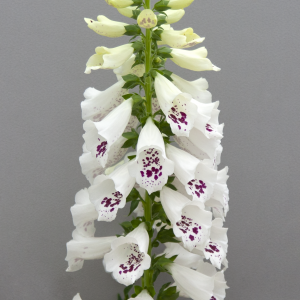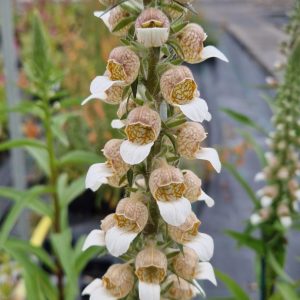Digitalis, commonly known as Foxglove, is a stunning perennial that adds vertical interest to gardens with its tall spikes of tubular flowers. Follow this comprehensive planting guide to ensure the successful cultivation of your Digitalis plants:
Site Selection
Sunlight Requirements: Plant Digitalis in a location that receives partial to full sunlight. While it can tolerate some shade, it generally thrives in at least 4-6 hours of direct sunlight daily.
Soil Conditions: Choose well-draining soil enriched with organic matter. Digitalis prefers slightly acidic to neutral soil with a pH between 5.5 and 7.0.
Planting Time
Optimal Timing: Plant Digitalis in late spring or early summer. This allows the plants to establish before the heat of summer and ensures a robust blooming period.
Planting Process
Prepare the Soil: Work the soil to a depth of 12 inches, incorporating compost or well-rotted manure for added fertility.
Planting Depth: Plant Digitalis at the same depth they were growing in the nursery container. Ensure the crown is at the soil surface.
Spacing: Space plants 12-18 inches apart to allow for proper airflow and prevent diseases.
Watering
Moderate Moisture: Keep the soil consistently moist, especially during dry periods. Water at the base of the plant to avoid wetting the foliage.
Mulching
Organic Mulch: Apply a 2-inch layer of organic mulch around the plants. Mulch helps retain soil moisture, suppress weeds, and regulate soil temperature.
Fertilisation
Light Feeding: Digitalis is not heavy feeders. Apply a balanced, all-purpose fertiliser in spring when new growth appears. Avoid excessive fertilisation, which can lead to leggy growth.
Support
Staking: Digitalis may benefit from staking, especially in windy conditions or if the plant becomes top-heavy. Install stakes at planting time or when the plants are about 12 inches tall.
Pruning
Deadheading: Remove spent flower spikes regularly to encourage continuous blooming. Trim back the entire plant after the first flush of flowers to promote a bushier habit.
Pest and Disease Management
Aphid Control: Monitor for aphids, especially on new growth. Use insecticidal soap or a strong stream of water to control infestations.
Good Air Circulation: Ensure proper spacing between plants to promote good air circulation and reduce the risk of fungal diseases.
Winter Care
Mulching: Mulch lightly around the plants in late Autumn to provide some protection during winter.
Monitoring and Adjustment
Visual Inspection: Regularly inspect your Digitalis for any signs of stress, pests, or diseases. Adjust watering and care practices based on your observations.
Enjoy the Blooms:
Appreciate the Height: Digitalis adds vertical interest to the garden. Position them towards the back of borders for an impressive display.
By following this planting guide, you’ll establish a beautiful display of Digitalis in your garden. Adapt care practices based on your specific growing conditions and enjoy the tall, elegant spikes of flowers that Digitalis brings to your landscape.






































